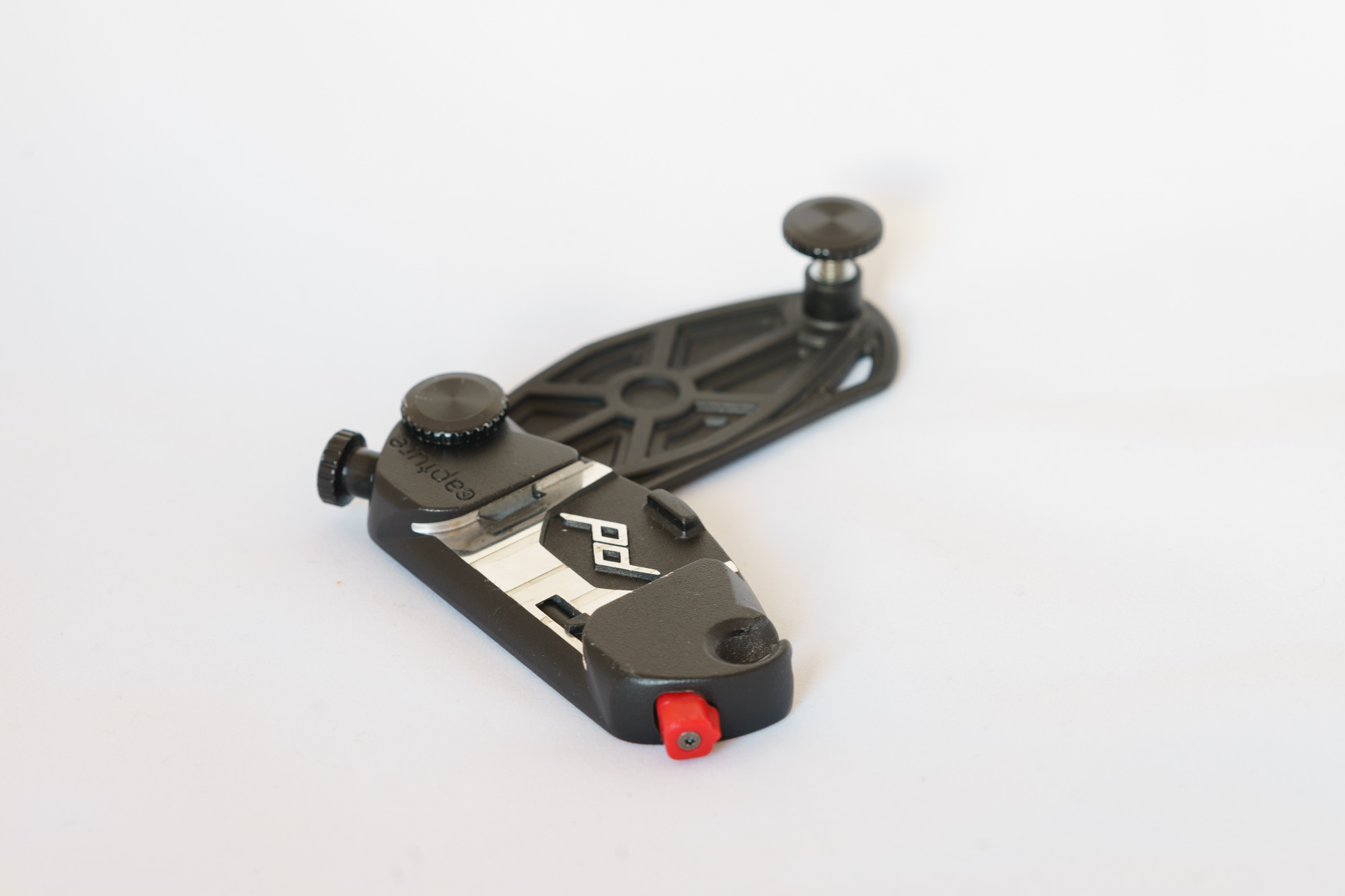Well, what do you know. It’s been almost a month since iOS 9 arrived — and content blockers with it — and the sky still hasn’t fallen on the heads of all those poor web publishers. Of course, that hasn’t stopped anyone from talking and writing about it ad infinitum, and the trend continued this week.
This tendency to over-analyze and dissect everything is clearly present in much of the writing that goes up online these days, particularly in the tech community.1 At the end of the day, though, life goes on, and regular people simply don’t care much about these things, if at all.
We’ll see what the real damage that can be attributed to ad blockers is when the dust settles but for now, in the absence of real, verifiable data from publishers or advertisers, the whole debate has reached a sort of standoff: both sides have clearly made their argument, and now it’s up for regular people at large to decide whether ad blockers are worth using or not.
Now, for a more enjoyable time, let’s move on to some of this week’s most interesting pieces of writing.
Issue #18: Life with a Plus-sized iPhone, diversity in tech, gender stereotypes, and apps vs Starbucks
This issue comes packed with cool pieces, as usual.
First up there are a couple user reports on the iPhone 6S Plus, with different but equally valid and interesting observations. Then we move on to a couple tech-related pieces, including a very controversial one that was taken down by Forbes, and we take a look at gender stereotypes and how they can go both ways. Then it’s time for a few photography-related articles and finally, we round out the issue with a few more light-hearted and hopefully fun to read pieces.
Enjoy.
♤
Thirteen days with an iPhone 6S Plus | Shawn Blanc →
Shawn Blanc shared his experience with the iPhone 6S Plus earlier in the week:
My friends who also use a 6/6s Plus told me to give it at least a week or two. It’s been 13 days, and I’m still not sure about it.
There are some things which I love about the phone. Namely: the superior mechanics for photography and videography, and the bigger screen real-estate. But I am not yet convinced that the tradeoff for those things — having a device that is unwieldy at best when using it with one hand — is worth it.
Shawn is finding himself at a crossroads, like many people in the past year. Ben Brooks said it best: the iPhone 6S Plus is not the best phone in the world, but it is the best pocket computer in the world. Framing it like that, it really makes a lot more sense.
♧
iPhone 6S Plus review | Stephen Hackett →
Another great take on the Plus-sized iPhone:
I know the Plus isn’t for everyone, but it is for me. The 5.5 inch, 401 ppi display isn’t just beautiful, but I find the additional space (and increased battery capacity) useful as this is the most-used device I own. Thankfully, every year, my pocket computer gets better, right on schedule.
♡
Twitter’s moment | Ben Thompson →
Interesting — and optimistic — thoughts on Twitter the company by Ben Thompson:
I think, though, it’s time for a new prediction: that the summer of 2015 will be seen as the low point for Twitter, and that this week in particular will mark the start of something new and valuable. Crucially, the reasons why are directly related to why I was bearish for so long: the product, the CEO, and the stock.
Ben’s article comes right on the heels of Jack Dorsey’s triumphant return to Twitter as CEO. It seems there’s hope and good vibes all around for Twitter these days, as if in the hands of Dorsey Twitter could somehow do no wrong.
I’m nowhere near as optimistic, but I hope Ben is right. The world is clearly better off with Twitter as a healthy company than it is with Twitter struggling to turn a profit and doing all sorts of sketchy things to its users in order to monetize them.
♢
The article on diversity in tech that Forbes took down | Brian S. Hall →
Brian S. Hall hit a nerve earlier in the week with a piece that was published on Forbes, provocatively titled “there is no diversity crisis in tech”. In it, he argued that Silicon Valley is first and foremost a meritocracy, and that the so-called diversity crisis in tech amounts to little more than people making excuses and not working hard enough to get what they want.
Unsurprisingly, the criticism the piece — and Hall himself — garnered was so brutal that Forbes ended up taking the piece down, but not until more than 24 hours had passed and the article had generated tens of thousands of pageviews, which is certainly a bit hypocritical on their part.
Hall has now republished the piece on his own site for all the world to see, and he’s standing behind it despite all the controversy.
Now, I don’t agree with Hall’s point, and I’m convinced the diversity crisis in tech is a very real, very serious problem.
That said, I’m linking to his piece here because I don’t believe in censorship, and I find Forbes’s behavior in this whole story to have been shameful, to say the least. If they published the piece in the first place, they should have owned up to it and left it up, despite the criticism they must have known it would garner.
What they’ve done — reaping the benefits of the situation and then hanging Hall out to dry — is quite simply despicable.
♤
Breasts: the ultimate weapons | Dean Burnett →
And since we’re talking about controversial topics, this hilarious peace on the over-sexualized appearance of many female characters in comics and video games is certainly a winner:
The gyroscopic properties and ability to store highly dangerous fluids are also results of the unique physics of breasts, but it also provides a distinct defensive property. Bullets and blades are very dangerous to humans due to the laws of conventional physics, but breasts don’t obey these laws, so are practically invulnerable to traditional weapons. You seldom see any of these comic or game characters with damaged breasts, and now you know why.
And if they’re invulnerable, there’s no real point in covering them with clothes. Clothes are damageable, so you’ll just ruin a good outfit.
♧
How poker player Annie Duke used gender stereotypes to win matches | Shankar Vedantam →
I loved this story. If you can, listen to the full recording:
DUKE: I figured it was part of the game that if somebody was at the table who was so emotionally invested in the fact that I was a woman, that they could treat me that way, that probably, that person wasn’t going to make good decisions at the table against me. So I really tried to sort of separate that out and think about it from a strategic place of, how can I come up with the best strategy to take their money because I guess, in the end, isn’t that the best revenge?
It is, indeed.
♡
Mossberg: the real trouble with web ads | Walt Mossberg →
Walt Mossberg:
I would gladly opt into seeing ads I found useful and relevant, just as I opt into reading content I find useful and relevant. And such opt-ins would even give the industry better information about what people might want to buy on a regular basis. If opting in is a bridge too far, I would even grudgingly settle for a clear, easy, universal way to opt out of ads that don’t work for me, or which are clumsy and obtrusive. That, too, should be useful information for sophisticated, up-front advertisers and the ad buyers they employ.
But web users in most cases can do neither, so some turn to blunt weapons like ad blockers, which do inflict collateral damage, especially on small web sites. Yes, the industry has created various ways of reporting bad ads. And an organization called the Digital Advertising Alliance has a program where some advertisers agree to place little blue triangles in ads, which users can click to report bad ones or to opt out of targeted advertising on a site. But, at least in my experience, that little blue triangle doesn’t show in most ads.
I agree with his general take, but I don’t accept his assumption that ad blocking will hurt small sites more than the bigger ones like The Verge. If anything, the rise of ad blockers will probably increase the value proposition of native advertising, which is precisely the form of advertising best suited to small sites. Native advertising doesn’t scale well, but it can be a very viable way for a small site to thrive.
Mossberg and the rest of big-website publishers are trying very hard to appear selfless and generous, as if they’re just looking out for the small guy. We’re fine here, it’s the little ones that will be hurt by all this.
Time will tell, but I suspect the reality is very different. Clearly, they are the ones who have more to lose if ad blocking becomes the norm. And I bet he knows that, too.
♢
Shave like your great grandpa: the ultimate straight razor shaving guide | Brett McKay →
Solid primer on straight razor shaving over at The Art of Manliness. I disagree with this bit, though:
Many right handed shavers switch hands to shave the left side of their face. Personally, I don’t trust the dexterity and touch in my left hand to make the switch. So I continue using my right hand to shave.
Shaving with your left hand — if you’re right-handed, that is — is scary at first, especially with a straight razor, but it’s surprisingly easy to learn. After only a couple shaves I quickly started to get the hang of it, and now I’d say I’m actually better at shaving the left side of my face than the right one.
The reason to use your left hand on the left side is that you should always follow the growth pattern of your beard, and that can change depending on the particular area you’re shaving. Due to the design of the razor itself, following that pattern cross-handed is often impractical, and sometimes even risky.
The initial resistance to maneuver a razor-sharp — quite literally — blade around your throat with your non-dominant hand is entirely understandable, but it is rooted in fear, not logic. If you’re careful, and patient, you’ll quickly get over it, and you’ll be surprised at how much better your shaves get.
♤
A weekend with a wide angle | Mathieu Gasquet →
Mathieu and Heather review the Sony FE 28mm f/2 lens over at MirrorLessons.
♧
Recommended Sony A7R II settings | Nasim Mansurov →
With so many customizable buttons, and so many menu items on Sony cameras, finding the optimal configuration for your shooting style is far from trivial. This excellent piece provides plenty of guidance on how to set the Sony A7R II just the way you like it.
♡
Pitching my “Snakes on a Plane” remake | Anna Heyward →
I really can’t think of a better piece to close this issue:
I know what you’re thinking: this movie has already been made. Why make it again? But hear me out. I really think I could make it better. For one, we could have it be a bit more gritty and realistic. So, instead of the snakes—which, I admit, are a fun touch, if a bit far-fetched—it’d be a normal American Airlines flight, and the fantastical element is introduced when the plane’s just sitting on the tarmac for two hours and forty-five minutes. Yes, that’s right, just sitting there. No, the audience doesn’t know the reason; neither do the characters. Instead of dramatic irony, it’s, like, the audience and the characters are bound together by American Airlines in their powerlessness.
Sounds horrifying.
♢
Stop comparing app prices to cups of Starbucks | Ben Brooks →
Nope, I was wrong. This article from late last night is the perfect way to close the issue. Ben Brooks lists all the reasons why a cup of Starbucks is actually a better value than most apps:
There was actual work put into this “latte”, and I know the because I saw them do it. Look, my nephew makes “apps” in his basement and I think it’s not very hard because he’s just not very smart. He can’t even carry a conversation — like at all. I think he mostly just watches porn down there, but that’s pure speculation as I am far too engaged in my social graph to go check.
The entire piece is full of awesome.
♢
Afterword
This is a long weekend in Spain, and I’m spending it in my hometown, as usual. Spain’s national holiday is on Monday, and Madrid will be occupied by a military parade, with fireworks and everything. It’s a fine display of patriotism, but I’ve already seen it plenty of times and I could really use some quiet time at home to get some work done.
As such, the rest of my weekend will probably be spent at the computer, or behind the camera. I’m hard at work on my review of the Capture Clip for Tools & Toys, which should be published next Tuesday, and after that I have a couple other projects coming up that I’m very eager to tackle.


Next week I’ll also be doing a portrait session with a good friend, and that will be a great opportunity to put the 70-200mm lens to good use once again. I just hope the weather is good because apparently, there’s a big storm coming. I’ll be sure to share a few images from the session, as well as my ongoing thoughts on the lens, and the camera.
Other than that, things have now settled into a kind of busy routine for the past few weeks, and I’m happy with the way everything is going. Granted, I’d love to have more time on my hands to do some longform writing, but I guess that will have to be put on hold for now. Hopefully I’ll be able to pick it up again before long.
And on that note, we’ve reached the end of yet another issue of Morning Coffee. I can’t believe there’s already 18 in the can with this one. It somehow still feels brand new, as if it was only yesterday that I published the first one. I don’t know if that’s a good sign, but I’ll take it.
Enjoy the rest of your weekend and, as ever, thank you for reading.
